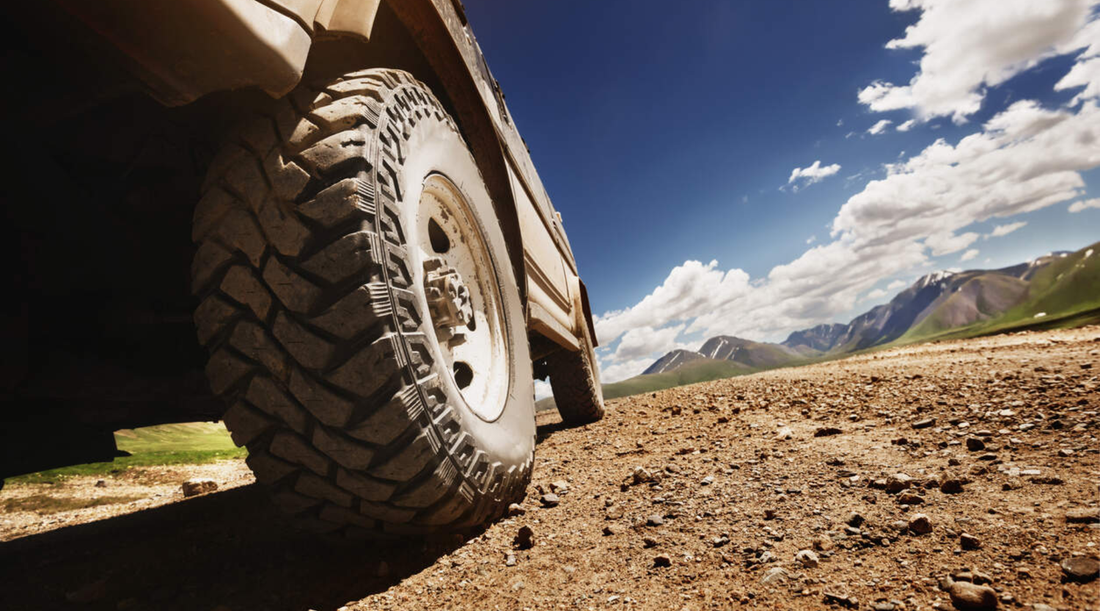
Importance of Tyre Rotation for 4WDs
For 4WD owners, proper tyre maintenance is essential to performance, safety and longevity. Whether you’re navigating rugged off-road trails or cruising long stretches of highway, your tyres take on uneven wear due to the vehicle’s weight distribution, drivetrain and terrain. Regular tyre rotation helps balance this wear across all four tyres (or five tyres if you carry a spare). In this guide, we’ll explore why tyre rotation is especially important for 4WD vehicles, how often to do it, and the best rotation patterns to keep your tyres performing at their best.
Importance of Tyre Rotation
4WD vehicles place different loads on front and rear tyres, especially when tackling off-road terrain or carrying heavy loads in different parts of the vehicle. Without regular rotation, the tyres wear out unevenly - which can lead to uneven handling and faster wear and tear.
For your differentials, tyre rotation is equally important. 4WD systems rely on tyres of similar diameter and tread depth to distribute power evenly across all wheels. If one tyre wears faster than the others, it can place extra strain on the front or rear differential - potentially causing costly mechanical issues over time.
Don’t forget the spare tyre. Many drivers neglect it until an emergency arises. Rotating your spare into the main set periodically ensures that it wears evenly and remains in top condition, giving you confidence that it will perform reliably when you need it most. After long periods of no use, your spare tyre might develop cracks and become harder, less flexible and less grippy. On top of this, if the spare tyre is brand new, it might not be properly balanced due to additional wear and tear on the tyres in use.
Regular rotation keeps all your tyres balanced, protects your differentials and ensures your spare is in good condition and ready for action.
How Often to Rotate Tyres on a 4WD
For most 4WD vehicles, a good rule of thumb is to rotate your tyres every 10,000 kilometres. However, this can vary depending on your driving conditions, load and tyre type.
Off-road or Heavy Load Driving
If you regularly tackle rough terrain or carry heavy loads, your tyres experience more uneven wear. In these cases, rotating them every 5,000 to 10,000 kilometres can help maintain even tread wear and prevent strain on your drivetrain.
On-Road or Lighter Off-Road Use
For vehicles driven mostly in the city or on less frequent off-road trips, tyre rotations can be done less frequently.
Please be sure to check your vehicle’s manual. Some manufacturers provide specific recommendations based on the drivetrain and tyre specifications.
Regular rotation not only extends tyre life but also helps maintain consistent handling, fuel efficiency, and safety.
Recommended Tyre Rotation Patterns for 4WDs
4WD With 4 Wheels
For 4WDs with 4 regular wheels and no spares, we recommend moving the front tyres straight to the rear and crossing the rear tyres to the opposite front positions. Image showing the movement is below:

This pattern helps balance wear between front and rear tyres while keeping tread depth even for better handling.
Vehicles With a Full-Size Spare Tyre
If your 4WD has a matching spare tyre, it’s best to include it in your rotation. For 5-Tyre rotation, change all five tyres using a sequence that places the spare in rotation and moves one of the main tyres to the spare position. This ensures the spare wears evenly over time. Please cross the wheels to ensure more even wear. Image showing the movement is below:

If you have external TPMS sensors installed on your tyres, rotating them is easy. If they are internal sensors, then it becomes more challenging. Thankfully Promota's TPMS kits come with tyre swap function allowing to your rotate your tyres without the need to take the sensor out of the tyre.
For effective rotation, please inspect tyres for uneven wear, punctures or damage while rotating. Keeping a record of rotation dates and patterns helps maintain consistency.



